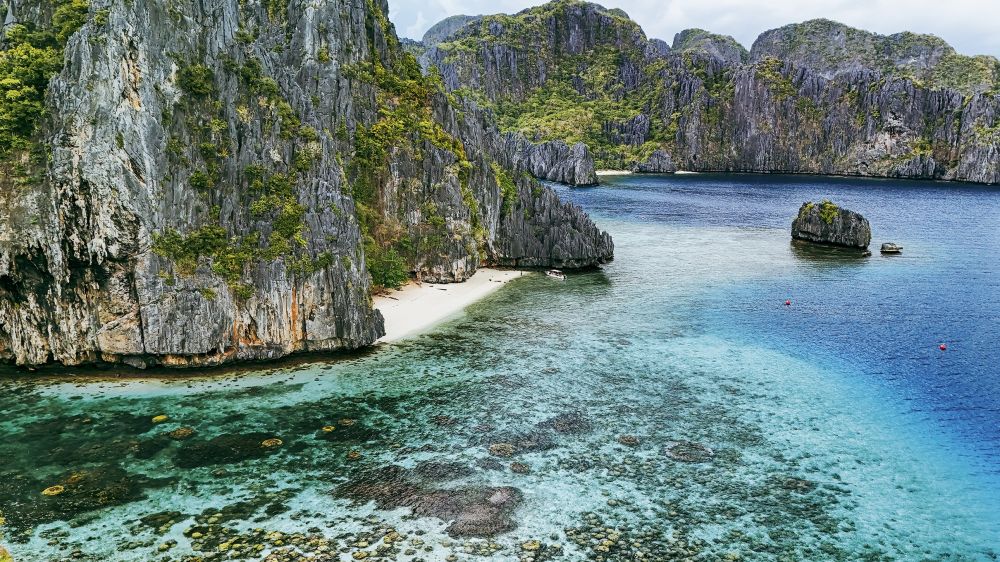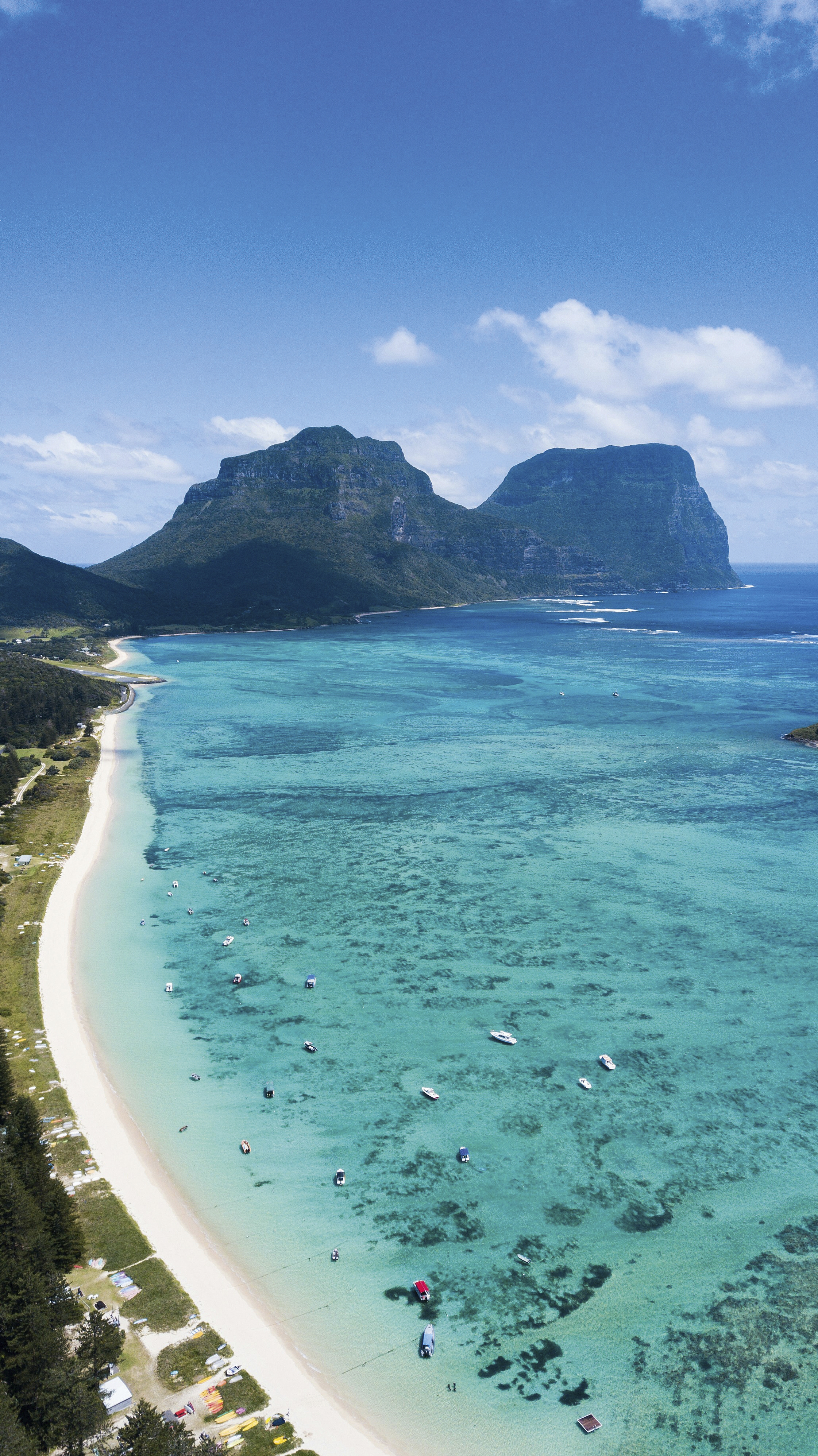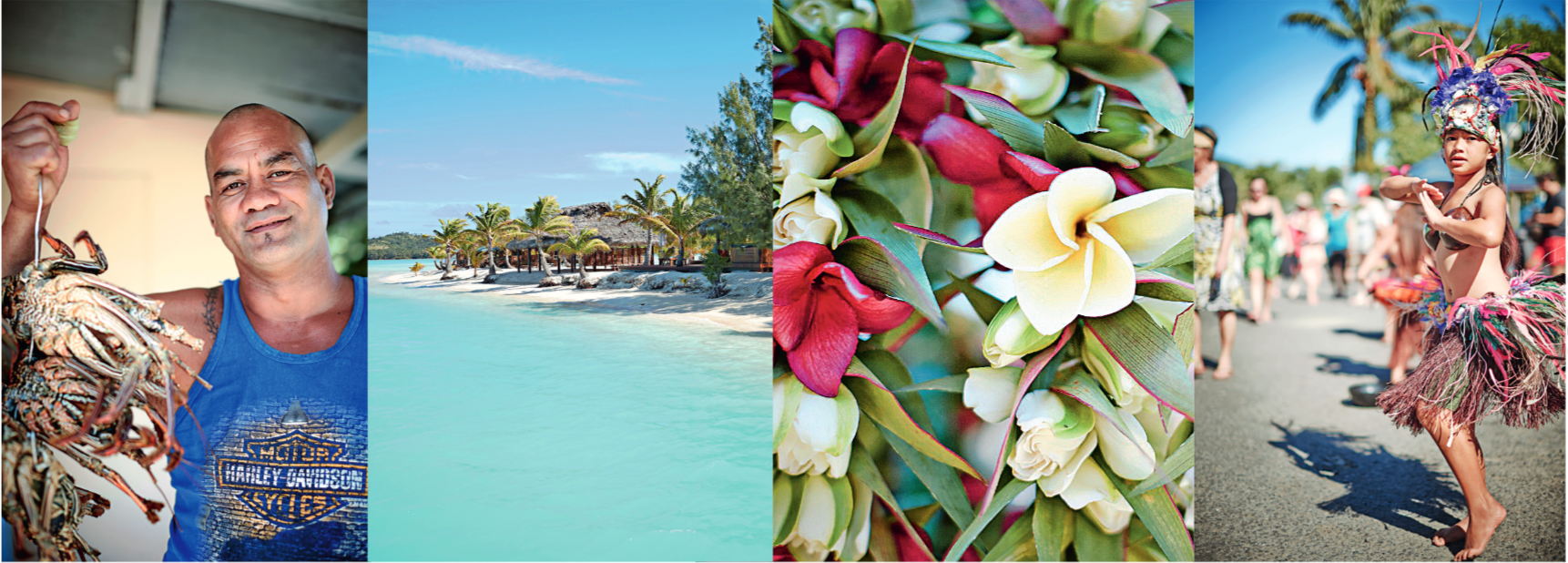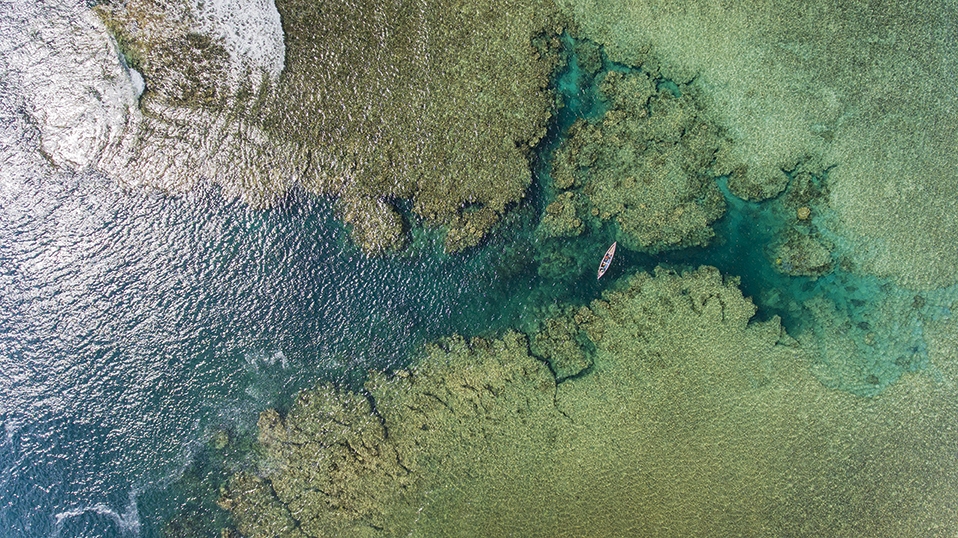Lord Howe Island Australia
Island getaways rarely come as tranquil as Lord Howe. As if this
offshoot of New South Wales wasn’t already remote and exclusive,
it permits a maximum capacity of 400 visitors at a time. Better still,
two-thirds of this crescent-shaped island remains pristine and
protected – and with mountains, forest, coral lagoons and empty
beaches to lose yourself in, the result is a hideaway that feels
uncrowded and untouched.
Getting to Lord Howe is an adventure in itself. Cast adrift in the Tasman Sea, the island is accessible via a two-hour flight from
Sydney or Brisbane, so holidays here can be topped and tailed with
a city break or the Great Barrier Reef. The lack of ferries from the
mainland feeds into Lord Howe’s secluded charm, but although it’s
super-sleepy, this is not some unrefined outpost. Modern Australia
makes its presence felt via quality facilities and infrastructure – plus,
of course, a wealth of decent places to eat and stay.
The food scene here showcases Lord Howe’s natural productivity,
via gourmet offerings foraged and harvested from land and sea.
Fish and shellfish are particular standouts among all these island
ingredients, with must-try dishes including kingfish and lobster
sourced from its surrounding waters. Anchorage Restaurant and
Capella Lodge are among the top spots to seek them out – ideally
paired with Australian wines brought over from the mainland.
Elsewhere, Lord Howe Island appeals for snorkelling, hiking and
nature-watching – activities that are all well-suited to the balmy
seasonal temperatures, with the mercury hovering around the
20Cs. When you’re not immersed in the lagoon, choosing from 11
lovely beaches to relax on, or scrambling up Mount Gower –
which dominates the southern part of the island – the best thing
to do is potter about on two wheels spotting local wildlife.
Noddies, terns and other seabirds are untroubled by people
passing close by; and with the lack of mobile phone reception
adding to the Edenic air, this is an island escape that promises
a total disconnect.







